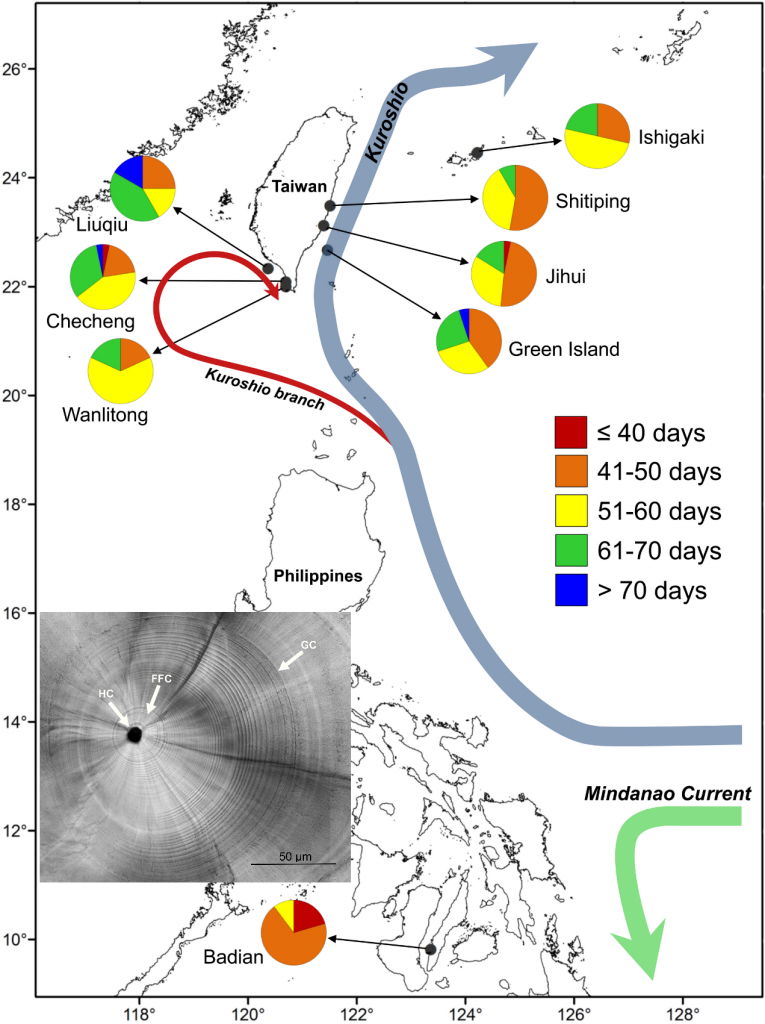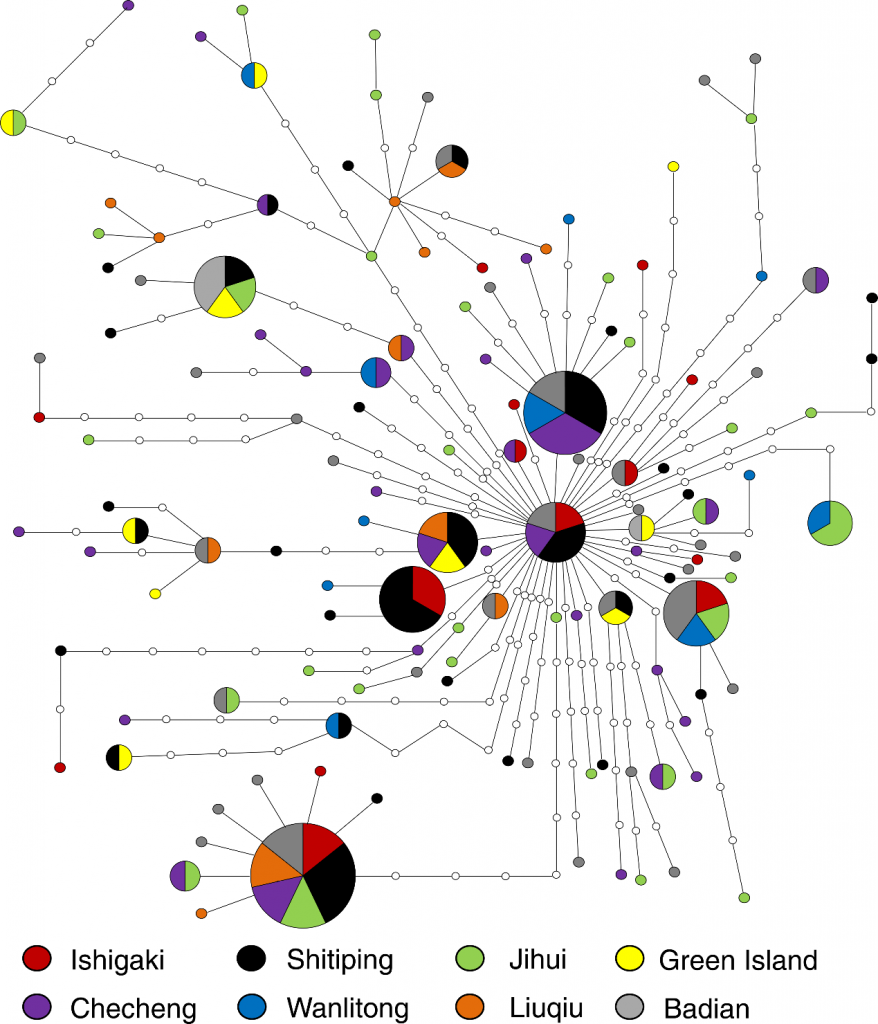琉球群島、臺灣與菲律賓海域小鰭鰭尾鯙之幼生漂浮期、初期成長率與族群遺傳結構之探討
黃文謙 蕭仁傑
海洋魚類的分布範圍及族群結構受到很多因子影響,為了探討此議題,本所碩士班學生 黃文謙,蕭仁傑教授與中山大學廖德裕副教授組成的團隊,選擇廣泛分布在印度-西太平洋的小鰭鰭尾鯙 (Uropterygius micropterus),作為研究材料,探討魚苗浮游期長度是否影響該魚種的族群結構。
本研究分析採集自日本石垣島,臺灣四周海域與菲律賓巴迪安一共195尾小鰭鰭尾鯙的粒線體基因序列與耳石所記錄的日齡與成長速度,結果發現各地點的小鰭鰭尾鯙並沒有明顯的遺傳分化,顯然此魚種可以藉由1-3個月的浮游期進行長距離擴散,其效果足以讓相隔數千公里遠的小鰭鰭尾鯙達到基因交流。然而小鰭鰭尾鯙的魚苗浮期的長度與成長速率在緯度間卻是呈現明顯差異,生長在低緯度的小鰭鰭尾鯙成長較快,魚苗浮游期較短,溫暖的水溫顯然是促進魚苗成長,縮短漂浮期的主要原因。綜合上述結果,小鰭鰭尾鯙利用較長的魚苗浮游期使基因在東亞島弧間交流順暢,因此不同地區的魚群具有高基因同質性,但海水溫度及洋流系統等環境因子可能影響小鰭鰭尾鯙的生活史特徵。
Map of sampling sites for U. micropterus. Within the pie charts, colors indicate the percentages of pelagic larval duration (PLD) for each sampling site. The inserted image of otolith microstructure illustartes the hatch check (HC), first feeding check (FFC), and growth check (GC) of the moray.
Minimum spanning network built from 185 concatenated mtDNA sequence (1,336 bp) of U. micropterus with 132 haplotypes. Colors represent correspondent sampling sites; the size of each pie chart is proportional to the number of individuals; hollow circles are haplotypes that were not collected in this study.














